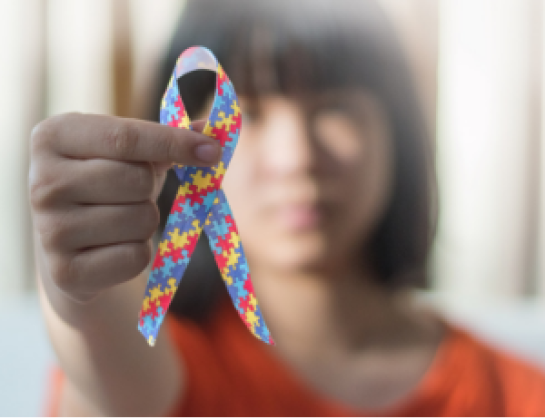An estimated one in 40 American children, aged three to 17 years old, have a parent-reported diagnosis of autism spectrum disorder (ASD), and 83% also suffer from one or more co-occurring health conditions, such as developmental disabilities (DDs) and mental health conditions (MHCs), according to a study published in Pediatrics.
Children with ASD require access to multidisciplinary teams of healthcare and community providers for management. However, the study—based on 2016 data from the National Survey of Children’s Health—found that parents of autistic youth were more likely than parents of children with other emotional, behavioral, and developmental conditions (EDBs) to have reported difficulties in accessing care services for unmet medical, behavioral, and social needs. Specifically, they were:
- 44% more likely to report problems getting mental health treatment
- 46% more likely to report not receiving mental healthcare
- 23% less likely to have a medical home
- 24% less likely to receive coordinated care
To better address these challenges without care fragmentation, the medical home model is critical. “Primary medical care models are often not adequately structured to provide comprehensive care for children with complex healthcare needs, such as those with autism, potentially resulting in fragmented provision of care,” researchers concluded in a population-based study, after analyzing data on their medical care.
The Medical Home Model: Addressing the Unique Needs of Children With ASD
A medical home, also known as the patient-centered medical home (PCMH), is a relationship-based approach to care “that extends beyond the walls of a clinical practice”—providing comprehensive primary care to patients and their families, according to the American Academy of Pediatrics (AAP) National Resource Center for Patient/Family-Centered Medical Home.
The AAP developed the medical home model over 50 years ago, believing that, as written in its Ad Hoc Definition of the Medical Home publication, “medical care of infants, children, and adolescents ideally should be accessible, continuous, comprehensive, family centered, coordinated, and compassionate. It should be delivered or directed by well-trained physicians who are able to manage or facilitate essentially all aspects of pediatric care.”
Originally a place to store the medical records of children and youth with special healthcare needs (CYSHCN), it now builds “partnerships with clinical specialists, families, and community resources” to treat the whole person.
In 2007, the AAP, the American Academy of Family Physicians (AAFP), the American College of Physicians (ACP), and the American Osteopathic Association (AOP), published Joint Principles of the PCMH model for quality improvement. As of 2016, 41 states promoted recognition of the PCMH medical home type through legislation, the Centers for Disease Control and Prevention (CDC) noted in a fact sheet.
Patient population selection is essential to success for medical home programs, and some focus specifically on autism. Consider two University of Utah programs, here in Salt Lake City, as examples.
Local Examples of Medical Home Programs for Autism
The University of Utah’s Neurobehavior Healthy Outcomes Medical Excellence (HOME) program provides medical and mental health services to people with developmental disabilities and co-occurring conditions, including ASD. Established in collaboration with Utah Medicaid, it provides coordinated care to over 1,000 children and adults with Medicaid coverage.
Program data shows positive results. “Since 2013, HOME has decreased the length of inpatient stays by 18% while also decreasing the 30-day readmission rate by nearly 7%, wrote HOME’s Primary Care Director Kyles Jones, MD, FAAFP, and Services Director Dean Weedon, MSc, in a case study. “The number of ambulatory care-sensitive ED visits for HOME enrollees has decreased by 4%, despite the total number of ED visits per 1,000 patients increasing by 6% during this same time frame.” They also noted an over 95% satisfaction rate from enrollees and families.
The Autism Spectrum Disorder Clinic also serves autistic children, adolescents, and adults. Established as a partnership between the University of Utah’s Department of Psychiatry, its HOME program, and its Neuropsychiatric Institute, the specialty clinic provides testing and intervention services across the continuum of care.
Providing Access to Care Coordination Services
As noted earlier, quality ASD treatment requires traditional and telemedicine services from a multidisciplinary team.
With professionals from different disciplines working together to improve health outcomes for autistic people, coordinated care is an important element. It enhances communication between providers, patients, and families by sharing data securely through technology and software. It improves services by connecting patients and families to appropriate social services organizations. It reduces costs by preventing overuse of medical services.
By examining the University of Utah’s HOME program, discussed above, we can see that this PCMH characteristic plays an important role in the achievement of Triple Aim goals.
Care coordination, together with the other four elements of a medical home as defined by The Agency for Healthcare Research and Quality (AHRQ), improves primary care delivery for children with autism through the promotion of team-based collaborations that meets their needs.



